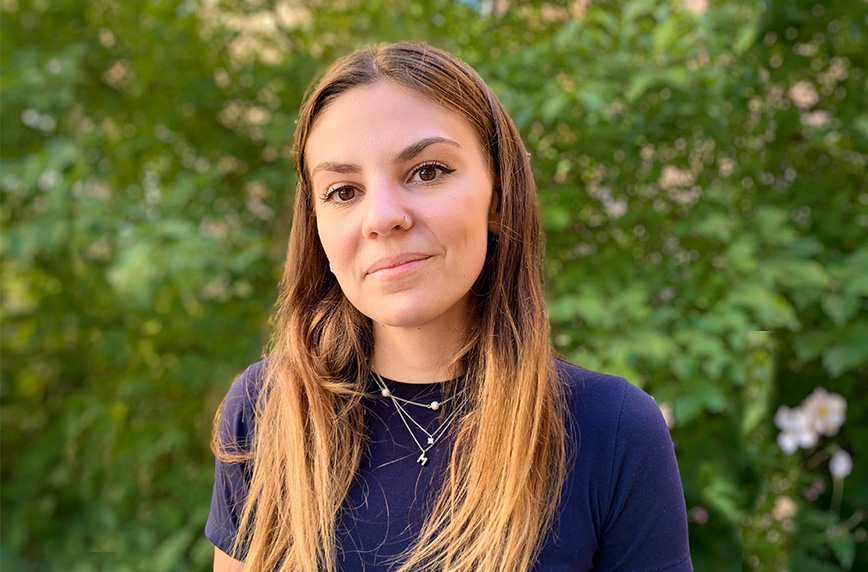Maria
Maria Pilar is 22 years old and comes from Italy. She completed her Bachelor's in Aerospace Engineering in Milan at Politecnico di Milano University, which gave her a great introduction to the master's courses within the master's in Aerospace Engineering – Space Track at KTH Main Campus. She plays tennis with KTH Racketklubb and is passionate about Formula 1, reading and hiking. At KTH, she is part of MIST (the Miniature Satellite project) and ÆSIR (the Association of Engineering Students in Rocketry).

Why did you choose this master's programme at KTH?
There are several reasons why I chose KTH. First of all, coming from a very theoretical teaching approach in my home university, I wanted to experience a more practical one, with the involvement of projects, to see first-hand what I am taught in class. Furthermore, I wanted to live in a more international environment, which KTH is known for and get in touch with cultures different from mine.
What are the best aspects of your programme?
One important thing to note is that the Aerospace programme at KTH has four tracks from which the student can choose, but this selection is not very strict. When you select the track, you must take its compulsory courses, but with the elective ones, you can choose whichever course you like from any other programme at KTH! This allows you to space out your knowledge and explore your passions, even if they are not strictly related to the track chosen.
The track selection comes only after the first semester, where some mandatory introductory courses are given to all aerospace students. This allows greater awareness of what the four tracks can offer before choosing one. I think this is very important, especially for students from a background different from Aerospace Engineering.
Have you chosen a specialisation track within the programme?
I have chosen the specialisation in Space for my studies, focusing on everything dealing with space engineering: satellites (GNSS as an example), rocket propulsion and astronomy/astrophysics. I chose this track because I have always wanted to work in the space sector of the aerospace industry, and it also allowed me to explore my passions for propulsion and astrophysics.
What are some of your favourite courses so far?
I think that one of the most incredible courses that KTH offers is Human Spaceflight, taught by the former Swedish astronaut Christer Fuglesang! First, the course is very interesting, giving insights on ISS, astronaut training and the future of human spaceflight. It involves a big project carried out in teams (30 in my case), divided into sub-teams, giving great insight into what our future job could look like in the space industry. Christer Fuglesang also organised a guided visit to the EAC (the European Astronaut Centre in Cologne), allowing us to see one of the places where European Astronauts train before going to space!
How do studies at KTH differ from your previous studies?
As I mentioned, my studies in Milan were very theoretical, the professors were not always available to help the students, and the classes usually included 150-200 students. Here at KTH, the courses almost always have a project as a part of the final grade, and the professors are willing to answer every kind of question. The classes are usually minimal, around 60, allowing a better relationship between the students and the professor.
How would you describe your time at KTH so far?
I have been at KTH for one year and have enjoyed everything I did here. I appreciated every course I took and successfully balanced my social and academic lives; I even had the opportunity to explore my passions! Thanks to KTH, I had the time and the chance to join the MIST student project, which includes a big team working on a CubeSat that will launch soon, and became president of ÆSIR, the KTH association dedicated to rocket design. One of the best things about KTH is that there are a lot of different projects and associations run by professors and students that allow you to work on the project all year long, side by side with your teammates and closely with sponsoring space companies.
